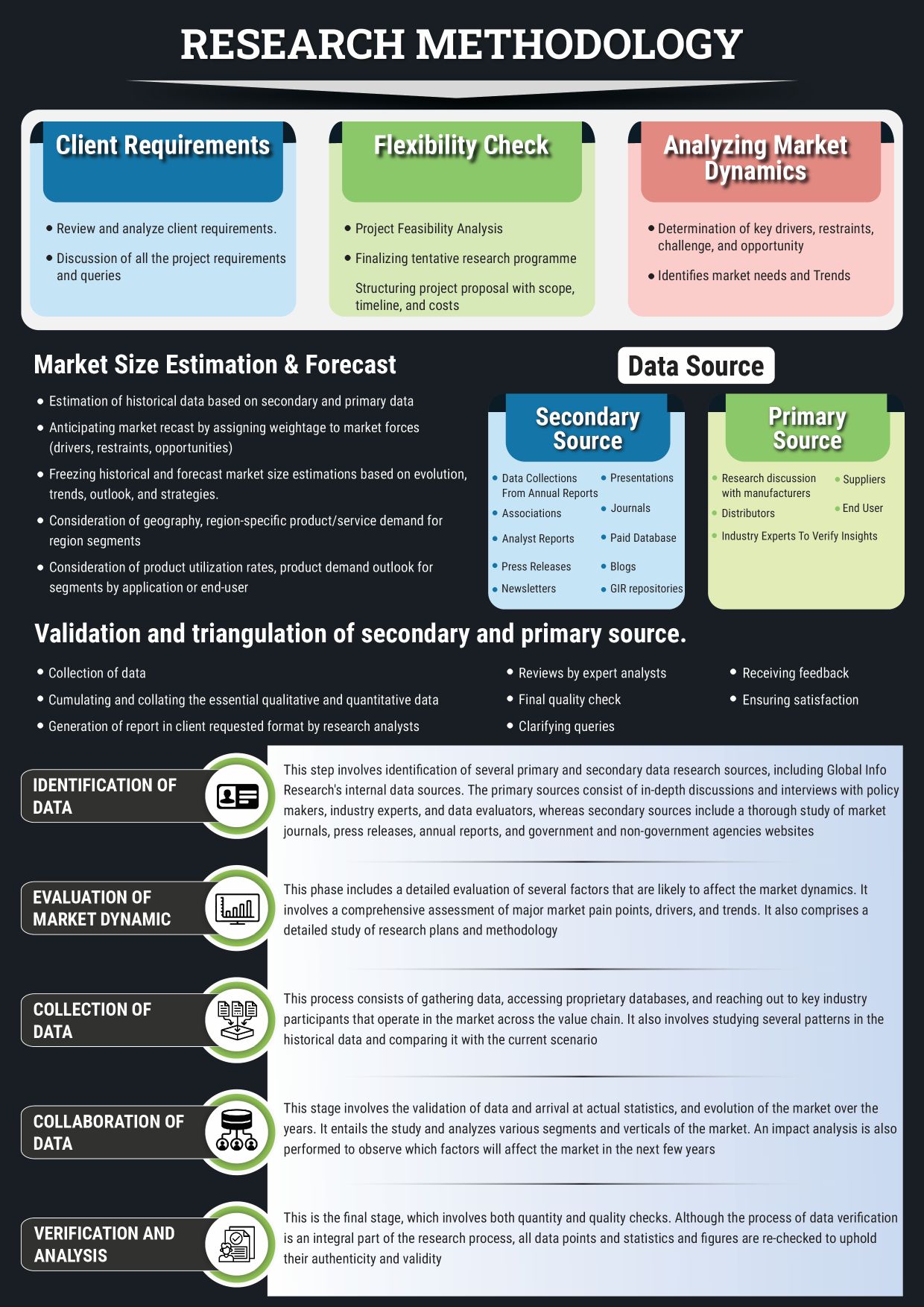Market Outlook
The global Bio-Based Polyurethane Market size was valued at USD 31 million in 2022 and is forecast to a readjusted size of USD 43 million by 2029 with a CAGR of 5.0% during review period.
Introduction: Why the Bio-Based Polyurethane Market Matters in 2025
The Bio-Based Polyurethane Market in 2025 represents a critical shift toward sustainable, low-carbon material solutions across multiple industries. Derived from renewable resources such as vegetable oils, starches, and bio-alcohols, bio-based polyurethanes are gaining ground in construction, automotive, furniture, and footwear applications. With growing pressure to reduce environmental impact, manufacturers and end-users alike are turning to bio-based alternatives to traditional petrochemical-based polymers.
As global regulations tighten around emissions and plastic waste, the adoption of bio-based polyurethane is accelerating. This market is now a key focus for stakeholders seeking eco-conscious innovations without compromising on material performance.
Market Drivers: What’s Fueling the Bio-Based Polyurethane Market Boom?
Sustainability Regulations and Climate Goals
Governments and industries are targeting net-zero emissions. Bio-based polyurethanes help reduce carbon footprints and align with green building certifications and eco-labels.Growth in Green Construction Materials
Builders are increasingly using bio-based insulation foams and sealants to meet sustainable construction standards. This trend is creating high demand for bio-derived polyurethane systems.Automotive Industry Push for Lightweight and Green Materials
Carmakers are adopting bio-based polymers in seating, interior trims, and NVH (noise, vibration, and harshness) components to meet environmental mandates and improve fuel efficiency.Rising Consumer Preference for Eco-Friendly Products
From footwear to furniture, consumers are showing strong interest in sustainable, non-toxic products. Bio-based polyurethane delivers on performance and environmental responsibility.
Innovation in Focus: How Bio-Based Polyurethane is Advancing
Improved Bio-Content and Functional Performance
Researchers are developing new polyols and isocyanate alternatives to increase the renewable content while enhancing strength, elasticity, and durability of the final product.Hybrid Formulations for Cost and Quality Balance
Blending bio-based ingredients with minimal petrochemical components allows manufacturers to deliver affordable, high-quality products during the transition phase.Crcular Economy Compatibility
Innovations in chemical recycling and biodegradability are enabling the recovery and reuse of bio-based polyurethane, closing the loop and supporting long-term sustainability goals.
Regional Breakdown: Where the Market is Growing Fastest
North America
Driven by green building codes and corporate sustainability targets, the U.S. and Canada are investing heavily in bio-based polyurethane technologies for construction and automotive applications.Europe
With a strong regulatory framework under the European Green Deal, Europe leads in bio-based chemical innovation and adoption across sectors.Asia-Pacific (APAC)
Countries like China, Japan, and South Korea are expanding bio-refining capacity and tapping into bio-polyurethane for high-volume sectors such as textiles, electronics, and packaging.Latin America and MEA
Agriculture-driven economies are exploring local feedstocks for bio-based PU production, supported by international sustainability funding and growing urban infrastructure needs.
Strategic Considerations: How to Succeed in the Bio-Based Polyurethane Market 2025
Secure Sustainable Feedstock Supply: Partner with agricultural processors and biorefineries to ensure consistent raw material availability.
Invest in Green R&D: Developing higher bio-content, lower VOC formulations will drive differentiation and compliance.
Collaborate Across Industries: Cross-sector partnerships with automakers, builders, and consumer brands can accelerate product development and adoption.
Educate the Market: Use transparent labeling, certifications, and lifecycle assessments to build consumer trust in bio-based solutions.
Scale Smartly: Leverage modular production models and regional hubs to reduce logistics costs and improve market responsiveness.
Conclusion: The Bio-Based Polyurethane Market 2025 - Resilient, Renewable, Ready for Scale
The Bio-Based Polyurethane Market is at a pivotal point. It combines material innovation, environmental responsibility, and commercial scalability - making it a prime candidate for long-term investment and product development. Whether reducing emissions in construction, enabling green mobility, or creating cleaner consumer products, bio-based polyurethane offers a real-world solution to complex sustainability challenges.
For chemical manufacturers, product designers, and market analysts, this segment offers both ecological impact and economic value. With continued research, supportive policy, and growing consumer demand, bio-based PU is no longer a niche - it’s the future of smart, sustainable polymer science.
Key Market Players
BASF
Lubrizol
Dow Chemical
SNP
Mitsui Chemicals
Rampf Holding
Johnson Controls
Rhino Linings
Bayer Material
Woodbridge Foam
Malama Composites
TSE Industries
Segmentation By Type
Rigid Foams
Flexible Foams
Case (Coatings, Adhesives, Sealants and Elastomers)
Others
Segmentation By Application
Construction
Automotive
Electronics &Electrical Appliances
Others
Segmentation By Region
North America (United States, Canada and Mexico)
Europe (Germany, France, United Kingdom, Russia, Italy, and Rest of Europe)
Asia-Pacific (China, Japan, Korea, India, Southeast Asia, and Australia)
South America (Brazil, Argentina, Colombia, and Rest of South America)
Middle East & Africa (Saudi Arabia, UAE, Egypt, South Africa, and Rest of Middle East & Africa)
Chapter 1, to describe Bio-Based Polyurethane product scope, market overview, market estimation caveats and base year.
Chapter 2, to profile the top manufacturers of Bio-Based Polyurethane, with price, sales, revenue and global market share of Bio-Based Polyurethane from 2018 to 2023.
Chapter 3, the Bio-Based Polyurethane competitive situation, sales quantity, revenue and global market share of top manufacturers are analyzed emphatically by landscape contrast.
Chapter 4, the Bio-Based Polyurethane breakdown data are shown at the regional level, to show the sales quantity, consumption value and growth by regions, from 2018 to 2029.
Chapter 5 and 6, to segment the sales by Type and application, with sales market share and growth rate by type, application, from 2018 to 2029.
Chapter 7, 8, 9, 10 and 11, to break the sales data at the country level, with sales quantity, consumption value and market share for key countries in the world, from 2017 to 2022.and Bio-Based Polyurethane market forecast, by regions, type and application, with sales and revenue, from 2024 to 2029.
Chapter 12, market dynamics, drivers, restraints, trends, Porters Five Forces analysis, and Influence of COVID-19 and Russia-Ukraine War.
Chapter 13, the key raw materials and key suppliers, and industry chain of Bio-Based Polyurethane.
Chapter 14 and 15, to describe Bio-Based Polyurethane sales channel, distributors, customers, research findings and conclusion.
1 Market Overview
1.1 Product Overview and Scope of Bio-Based Polyurethane
1.2 Market Estimation Caveats and Base Year
1.3 Market Analysis by Type
1.3.1 Overview: Global Bio-Based Polyurethane Consumption Value by Type: 2018 Versus 2022 Versus 2029
1.3.2 Rigid Foams
1.3.3 Flexible Foams
1.3.4 Case (Coatings, Adhesives, Sealants and Elastomers)
1.3.5 Others
1.4 Market Analysis by Application
1.4.1 Overview: Global Bio-Based Polyurethane Consumption Value by Application: 2018 Versus 2022 Versus 2029
1.4.2 Construction
1.4.3 Automotive
1.4.4 Electronics &Electrical Appliances
1.4.5 Others
1.5 Global Bio-Based Polyurethane Market Size & Forecast
1.5.1 Global Bio-Based Polyurethane Consumption Value (2018 & 2022 & 2029)
1.5.2 Global Bio-Based Polyurethane Sales Quantity (2018-2029)
1.5.3 Global Bio-Based Polyurethane Average Price (2018-2029)
2 Manufacturers Profiles
2.1 BASF
2.1.1 BASF Details
2.1.2 BASF Major Business
2.1.3 BASF Bio-Based Polyurethane Product and Services
2.1.4 BASF Bio-Based Polyurethane Sales Quantity, Average Price, Revenue, Gross Margin and Market Share (2018-2023)
2.1.5 BASF Recent Developments/Updates
2.2 Lubrizol
2.2.1 Lubrizol Details
2.2.2 Lubrizol Major Business
2.2.3 Lubrizol Bio-Based Polyurethane Product and Services
2.2.4 Lubrizol Bio-Based Polyurethane Sales Quantity, Average Price, Revenue, Gross Margin and Market Share (2018-2023)
2.2.5 Lubrizol Recent Developments/Updates
2.3 Dow Chemical
2.3.1 Dow Chemical Details
2.3.2 Dow Chemical Major Business
2.3.3 Dow Chemical Bio-Based Polyurethane Product and Services
2.3.4 Dow Chemical Bio-Based Polyurethane Sales Quantity, Average Price, Revenue, Gross Margin and Market Share (2018-2023)
2.3.5 Dow Chemical Recent Developments/Updates
2.4 SNP
2.4.1 SNP Details
2.4.2 SNP Major Business
2.4.3 SNP Bio-Based Polyurethane Product and Services
2.4.4 SNP Bio-Based Polyurethane Sales Quantity, Average Price, Revenue, Gross Margin and Market Share (2018-2023)
2.4.5 SNP Recent Developments/Updates
2.5 Mitsui Chemicals
2.5.1 Mitsui Chemicals Details
2.5.2 Mitsui Chemicals Major Business
2.5.3 Mitsui Chemicals Bio-Based Polyurethane Product and Services
2.5.4 Mitsui Chemicals Bio-Based Polyurethane Sales Quantity, Average Price, Revenue, Gross Margin and Market Share (2018-2023)
2.5.5 Mitsui Chemicals Recent Developments/Updates
2.6 Rampf Holding
2.6.1 Rampf Holding Details
2.6.2 Rampf Holding Major Business
2.6.3 Rampf Holding Bio-Based Polyurethane Product and Services
2.6.4 Rampf Holding Bio-Based Polyurethane Sales Quantity, Average Price, Revenue, Gross Margin and Market Share (2018-2023)
2.6.5 Rampf Holding Recent Developments/Updates
2.7 Johnson Controls
2.7.1 Johnson Controls Details
2.7.2 Johnson Controls Major Business
2.7.3 Johnson Controls Bio-Based Polyurethane Product and Services
2.7.4 Johnson Controls Bio-Based Polyurethane Sales Quantity, Average Price, Revenue, Gross Margin and Market Share (2018-2023)
2.7.5 Johnson Controls Recent Developments/Updates
2.8 Rhino Linings
2.8.1 Rhino Linings Details
2.8.2 Rhino Linings Major Business
2.8.3 Rhino Linings Bio-Based Polyurethane Product and Services
2.8.4 Rhino Linings Bio-Based Polyurethane Sales Quantity, Average Price, Revenue, Gross Margin and Market Share (2018-2023)
2.8.5 Rhino Linings Recent Developments/Updates
2.9 Bayer Material
2.9.1 Bayer Material Details
2.9.2 Bayer Material Major Business
2.9.3 Bayer Material Bio-Based Polyurethane Product and Services
2.9.4 Bayer Material Bio-Based Polyurethane Sales Quantity, Average Price, Revenue, Gross Margin and Market Share (2018-2023)
2.9.5 Bayer Material Recent Developments/Updates
2.10 Woodbridge Foam
2.10.1 Woodbridge Foam Details
2.10.2 Woodbridge Foam Major Business
2.10.3 Woodbridge Foam Bio-Based Polyurethane Product and Services
2.10.4 Woodbridge Foam Bio-Based Polyurethane Sales Quantity, Average Price, Revenue, Gross Margin and Market Share (2018-2023)
2.10.5 Woodbridge Foam Recent Developments/Updates
2.11 Malama Composites
2.11.1 Malama Composites Details
2.11.2 Malama Composites Major Business
2.11.3 Malama Composites Bio-Based Polyurethane Product and Services
2.11.4 Malama Composites Bio-Based Polyurethane Sales Quantity, Average Price, Revenue, Gross Margin and Market Share (2018-2023)
2.11.5 Malama Composites Recent Developments/Updates
2.12 TSE Industries
2.12.1 TSE Industries Details
2.12.2 TSE Industries Major Business
2.12.3 TSE Industries Bio-Based Polyurethane Product and Services
2.12.4 TSE Industries Bio-Based Polyurethane Sales Quantity, Average Price, Revenue, Gross Margin and Market Share (2018-2023)
2.12.5 TSE Industries Recent Developments/Updates
3 Competitive Environment: Bio-Based Polyurethane by Manufacturer
3.1 Global Bio-Based Polyurethane Sales Quantity by Manufacturer (2018-2023)
3.2 Global Bio-Based Polyurethane Revenue by Manufacturer (2018-2023)
3.3 Global Bio-Based Polyurethane Average Price by Manufacturer (2018-2023)
3.4 Market Share Analysis (2022)
3.4.1 Producer Shipments of Bio-Based Polyurethane by Manufacturer Revenue ($MM) and Market Share (%): 2022
3.4.2 Top 3 Bio-Based Polyurethane Manufacturer Market Share in 2022
3.4.2 Top 6 Bio-Based Polyurethane Manufacturer Market Share in 2022
3.5 Bio-Based Polyurethane Market: Overall Company Footprint Analysis
3.5.1 Bio-Based Polyurethane Market: Region Footprint
3.5.2 Bio-Based Polyurethane Market: Company Product Type Footprint
3.5.3 Bio-Based Polyurethane Market: Company Product Application Footprint
3.6 New Market Entrants and Barriers to Market Entry
3.7 Mergers, Acquisition, Agreements, and Collaborations
4 Consumption Analysis by Region
4.1 Global Bio-Based Polyurethane Market Size by Region
4.1.1 Global Bio-Based Polyurethane Sales Quantity by Region (2018-2029)
4.1.2 Global Bio-Based Polyurethane Consumption Value by Region (2018-2029)
4.1.3 Global Bio-Based Polyurethane Average Price by Region (2018-2029)
4.2 North America Bio-Based Polyurethane Consumption Value (2018-2029)
4.3 Europe Bio-Based Polyurethane Consumption Value (2018-2029)
4.4 Asia-Pacific Bio-Based Polyurethane Consumption Value (2018-2029)
4.5 South America Bio-Based Polyurethane Consumption Value (2018-2029)
4.6 Middle East and Africa Bio-Based Polyurethane Consumption Value (2018-2029)
5 Market Segment by Type
5.1 Global Bio-Based Polyurethane Sales Quantity by Type (2018-2029)
5.2 Global Bio-Based Polyurethane Consumption Value by Type (2018-2029)
5.3 Global Bio-Based Polyurethane Average Price by Type (2018-2029)
6 Market Segment by Application
6.1 Global Bio-Based Polyurethane Sales Quantity by Application (2018-2029)
6.2 Global Bio-Based Polyurethane Consumption Value by Application (2018-2029)
6.3 Global Bio-Based Polyurethane Average Price by Application (2018-2029)
7 North America
7.1 North America Bio-Based Polyurethane Sales Quantity by Type (2018-2029)
7.2 North America Bio-Based Polyurethane Sales Quantity by Application (2018-2029)
7.3 North America Bio-Based Polyurethane Market Size by Country
7.3.1 North America Bio-Based Polyurethane Sales Quantity by Country (2018-2029)
7.3.2 North America Bio-Based Polyurethane Consumption Value by Country (2018-2029)
7.3.3 United States Market Size and Forecast (2018-2029)
7.3.4 Canada Market Size and Forecast (2018-2029)
7.3.5 Mexico Market Size and Forecast (2018-2029)
8 Europe
8.1 Europe Bio-Based Polyurethane Sales Quantity by Type (2018-2029)
8.2 Europe Bio-Based Polyurethane Sales Quantity by Application (2018-2029)
8.3 Europe Bio-Based Polyurethane Market Size by Country
8.3.1 Europe Bio-Based Polyurethane Sales Quantity by Country (2018-2029)
8.3.2 Europe Bio-Based Polyurethane Consumption Value by Country (2018-2029)
8.3.3 Germany Market Size and Forecast (2018-2029)
8.3.4 France Market Size and Forecast (2018-2029)
8.3.5 United Kingdom Market Size and Forecast (2018-2029)
8.3.6 Russia Market Size and Forecast (2018-2029)
8.3.7 Italy Market Size and Forecast (2018-2029)
9 Asia-Pacific
9.1 Asia-Pacific Bio-Based Polyurethane Sales Quantity by Type (2018-2029)
9.2 Asia-Pacific Bio-Based Polyurethane Sales Quantity by Application (2018-2029)
9.3 Asia-Pacific Bio-Based Polyurethane Market Size by Region
9.3.1 Asia-Pacific Bio-Based Polyurethane Sales Quantity by Region (2018-2029)
9.3.2 Asia-Pacific Bio-Based Polyurethane Consumption Value by Region (2018-2029)
9.3.3 China Market Size and Forecast (2018-2029)
9.3.4 Japan Market Size and Forecast (2018-2029)
9.3.5 Korea Market Size and Forecast (2018-2029)
9.3.6 India Market Size and Forecast (2018-2029)
9.3.7 Southeast Asia Market Size and Forecast (2018-2029)
9.3.8 Australia Market Size and Forecast (2018-2029)
10 South America
10.1 South America Bio-Based Polyurethane Sales Quantity by Type (2018-2029)
10.2 South America Bio-Based Polyurethane Sales Quantity by Application (2018-2029)
10.3 South America Bio-Based Polyurethane Market Size by Country
10.3.1 South America Bio-Based Polyurethane Sales Quantity by Country (2018-2029)
10.3.2 South America Bio-Based Polyurethane Consumption Value by Country (2018-2029)
10.3.3 Brazil Market Size and Forecast (2018-2029)
10.3.4 Argentina Market Size and Forecast (2018-2029)
11 Middle East & Africa
11.1 Middle East & Africa Bio-Based Polyurethane Sales Quantity by Type (2018-2029)
11.2 Middle East & Africa Bio-Based Polyurethane Sales Quantity by Application (2018-2029)
11.3 Middle East & Africa Bio-Based Polyurethane Market Size by Country
11.3.1 Middle East & Africa Bio-Based Polyurethane Sales Quantity by Country (2018-2029)
11.3.2 Middle East & Africa Bio-Based Polyurethane Consumption Value by Country (2018-2029)
11.3.3 Turkey Market Size and Forecast (2018-2029)
11.3.4 Egypt Market Size and Forecast (2018-2029)
11.3.5 Saudi Arabia Market Size and Forecast (2018-2029)
11.3.6 South Africa Market Size and Forecast (2018-2029)
12 Market Dynamics
12.1 Bio-Based Polyurethane Market Drivers
12.2 Bio-Based Polyurethane Market Restraints
12.3 Bio-Based Polyurethane Trends Analysis
12.4 Porters Five Forces Analysis
12.4.1 Threat of New Entrants
12.4.2 Bargaining Power of Suppliers
12.4.3 Bargaining Power of Buyers
12.4.4 Threat of Substitutes
12.4.5 Competitive Rivalry
12.5 Influence of COVID-19 and Russia-Ukraine War
12.5.1 Influence of COVID-19
12.5.2 Influence of Russia-Ukraine War
13 Raw Material and Industry Chain
13.1 Raw Material of Bio-Based Polyurethane and Key Manufacturers
13.2 Manufacturing Costs Percentage of Bio-Based Polyurethane
13.3 Bio-Based Polyurethane Production Process
13.4 Bio-Based Polyurethane Industrial Chain
14 Shipments by Distribution Channel
14.1 Sales Channel
14.1.1 Direct to End-User
14.1.2 Distributors
14.2 Bio-Based Polyurethane Typical Distributors
14.3 Bio-Based Polyurethane Typical Customers
15 Research Findings and Conclusion
16 Appendix
16.1 Methodology
16.2 Research Process and Data Source
16.3 Disclaimer
List of Tables
Table 1. Global Bio-Based Polyurethane Consumption Value by Type, (USD Million), 2018 & 2022 & 2029
Table 2. Global Bio-Based Polyurethane Consumption Value by Application, (USD Million), 2018 & 2022 & 2029
Table 3. BASF Basic Information, Manufacturing Base and Competitors
Table 4. BASF Major Business
Table 5. BASF Bio-Based Polyurethane Product and Services
Table 6. BASF Bio-Based Polyurethane Sales Quantity (K MT), Average Price (USD/MT), Revenue (USD Million), Gross Margin and Market Share (2018-2023)
Table 7. BASF Recent Developments/Updates
Table 8. Lubrizol Basic Information, Manufacturing Base and Competitors
Table 9. Lubrizol Major Business
Table 10. Lubrizol Bio-Based Polyurethane Product and Services
Table 11. Lubrizol Bio-Based Polyurethane Sales Quantity (K MT), Average Price (USD/MT), Revenue (USD Million), Gross Margin and Market Share (2018-2023)
Table 12. Lubrizol Recent Developments/Updates
Table 13. Dow Chemical Basic Information, Manufacturing Base and Competitors
Table 14. Dow Chemical Major Business
Table 15. Dow Chemical Bio-Based Polyurethane Product and Services
Table 16. Dow Chemical Bio-Based Polyurethane Sales Quantity (K MT), Average Price (USD/MT), Revenue (USD Million), Gross Margin and Market Share (2018-2023)
Table 17. Dow Chemical Recent Developments/Updates
Table 18. SNP Basic Information, Manufacturing Base and Competitors
Table 19. SNP Major Business
Table 20. SNP Bio-Based Polyurethane Product and Services
Table 21. SNP Bio-Based Polyurethane Sales Quantity (K MT), Average Price (USD/MT), Revenue (USD Million), Gross Margin and Market Share (2018-2023)
Table 22. SNP Recent Developments/Updates
Table 23. Mitsui Chemicals Basic Information, Manufacturing Base and Competitors
Table 24. Mitsui Chemicals Major Business
Table 25. Mitsui Chemicals Bio-Based Polyurethane Product and Services
Table 26. Mitsui Chemicals Bio-Based Polyurethane Sales Quantity (K MT), Average Price (USD/MT), Revenue (USD Million), Gross Margin and Market Share (2018-2023)
Table 27. Mitsui Chemicals Recent Developments/Updates
Table 28. Rampf Holding Basic Information, Manufacturing Base and Competitors
Table 29. Rampf Holding Major Business
Table 30. Rampf Holding Bio-Based Polyurethane Product and Services
Table 31. Rampf Holding Bio-Based Polyurethane Sales Quantity (K MT), Average Price (USD/MT), Revenue (USD Million), Gross Margin and Market Share (2018-2023)
Table 32. Rampf Holding Recent Developments/Updates
Table 33. Johnson Controls Basic Information, Manufacturing Base and Competitors
Table 34. Johnson Controls Major Business
Table 35. Johnson Controls Bio-Based Polyurethane Product and Services
Table 36. Johnson Controls Bio-Based Polyurethane Sales Quantity (K MT), Average Price (USD/MT), Revenue (USD Million), Gross Margin and Market Share (2018-2023)
Table 37. Johnson Controls Recent Developments/Updates
Table 38. Rhino Linings Basic Information, Manufacturing Base and Competitors
Table 39. Rhino Linings Major Business
Table 40. Rhino Linings Bio-Based Polyurethane Product and Services
Table 41. Rhino Linings Bio-Based Polyurethane Sales Quantity (K MT), Average Price (USD/MT), Revenue (USD Million), Gross Margin and Market Share (2018-2023)
Table 42. Rhino Linings Recent Developments/Updates
Table 43. Bayer Material Basic Information, Manufacturing Base and Competitors
Table 44. Bayer Material Major Business
Table 45. Bayer Material Bio-Based Polyurethane Product and Services
Table 46. Bayer Material Bio-Based Polyurethane Sales Quantity (K MT), Average Price (USD/MT), Revenue (USD Million), Gross Margin and Market Share (2018-2023)
Table 47. Bayer Material Recent Developments/Updates
Table 48. Woodbridge Foam Basic Information, Manufacturing Base and Competitors
Table 49. Woodbridge Foam Major Business
Table 50. Woodbridge Foam Bio-Based Polyurethane Product and Services
Table 51. Woodbridge Foam Bio-Based Polyurethane Sales Quantity (K MT), Average Price (USD/MT), Revenue (USD Million), Gross Margin and Market Share (2018-2023)
Table 52. Woodbridge Foam Recent Developments/Updates
Table 53. Malama Composites Basic Information, Manufacturing Base and Competitors
Table 54. Malama Composites Major Business
Table 55. Malama Composites Bio-Based Polyurethane Product and Services
Table 56. Malama Composites Bio-Based Polyurethane Sales Quantity (K MT), Average Price (USD/MT), Revenue (USD Million), Gross Margin and Market Share (2018-2023)
Table 57. Malama Composites Recent Developments/Updates
Table 58. TSE Industries Basic Information, Manufacturing Base and Competitors
Table 59. TSE Industries Major Business
Table 60. TSE Industries Bio-Based Polyurethane Product and Services
Table 61. TSE Industries Bio-Based Polyurethane Sales Quantity (K MT), Average Price (USD/MT), Revenue (USD Million), Gross Margin and Market Share (2018-2023)
Table 62. TSE Industries Recent Developments/Updates
Table 63. Global Bio-Based Polyurethane Sales Quantity by Manufacturer (2018-2023) & (K MT)
Table 64. Global Bio-Based Polyurethane Revenue by Manufacturer (2018-2023) & (USD Million)
Table 65. Global Bio-Based Polyurethane Average Price by Manufacturer (2018-2023) & (USD/MT)
Table 66. Market Position of Manufacturers in Bio-Based Polyurethane, (Tier 1, Tier 2, and Tier 3), Based on Consumption Value in 2022
Table 67. Head Office and Bio-Based Polyurethane Production Site of Key Manufacturer
Table 68. Bio-Based Polyurethane Market: Company Product Type Footprint
Table 69. Bio-Based Polyurethane Market: Company Product Application Footprint
Table 70. Bio-Based Polyurethane New Market Entrants and Barriers to Market Entry
Table 71. Bio-Based Polyurethane Mergers, Acquisition, Agreements, and Collaborations
Table 72. Global Bio-Based Polyurethane Sales Quantity by Region (2018-2023) & (K MT)
Table 73. Global Bio-Based Polyurethane Sales Quantity by Region (2024-2029) & (K MT)
Table 74. Global Bio-Based Polyurethane Consumption Value by Region (2018-2023) & (USD Million)
Table 75. Global Bio-Based Polyurethane Consumption Value by Region (2024-2029) & (USD Million)
Table 76. Global Bio-Based Polyurethane Average Price by Region (2018-2023) & (USD/MT)
Table 77. Global Bio-Based Polyurethane Average Price by Region (2024-2029) & (USD/MT)
Table 78. Global Bio-Based Polyurethane Sales Quantity by Type (2018-2023) & (K MT)
Table 79. Global Bio-Based Polyurethane Sales Quantity by Type (2024-2029) & (K MT)
Table 80. Global Bio-Based Polyurethane Consumption Value by Type (2018-2023) & (USD Million)
Table 81. Global Bio-Based Polyurethane Consumption Value by Type (2024-2029) & (USD Million)
Table 82. Global Bio-Based Polyurethane Average Price by Type (2018-2023) & (USD/MT)
Table 83. Global Bio-Based Polyurethane Average Price by Type (2024-2029) & (USD/MT)
Table 84. Global Bio-Based Polyurethane Sales Quantity by Application (2018-2023) & (K MT)
Table 85. Global Bio-Based Polyurethane Sales Quantity by Application (2024-2029) & (K MT)
Table 86. Global Bio-Based Polyurethane Consumption Value by Application (2018-2023) & (USD Million)
Table 87. Global Bio-Based Polyurethane Consumption Value by Application (2024-2029) & (USD Million)
Table 88. Global Bio-Based Polyurethane Average Price by Application (2018-2023) & (USD/MT)
Table 89. Global Bio-Based Polyurethane Average Price by Application (2024-2029) & (USD/MT)
Table 90. North America Bio-Based Polyurethane Sales Quantity by Type (2018-2023) & (K MT)
Table 91. North America Bio-Based Polyurethane Sales Quantity by Type (2024-2029) & (K MT)
Table 92. North America Bio-Based Polyurethane Sales Quantity by Application (2018-2023) & (K MT)
Table 93. North America Bio-Based Polyurethane Sales Quantity by Application (2024-2029) & (K MT)
Table 94. North America Bio-Based Polyurethane Sales Quantity by Country (2018-2023) & (K MT)
Table 95. North America Bio-Based Polyurethane Sales Quantity by Country (2024-2029) & (K MT)
Table 96. North America Bio-Based Polyurethane Consumption Value by Country (2018-2023) & (USD Million)
Table 97. North America Bio-Based Polyurethane Consumption Value by Country (2024-2029) & (USD Million)
Table 98. Europe Bio-Based Polyurethane Sales Quantity by Type (2018-2023) & (K MT)
Table 99. Europe Bio-Based Polyurethane Sales Quantity by Type (2024-2029) & (K MT)
Table 100. Europe Bio-Based Polyurethane Sales Quantity by Application (2018-2023) & (K MT)
Table 101. Europe Bio-Based Polyurethane Sales Quantity by Application (2024-2029) & (K MT)
Table 102. Europe Bio-Based Polyurethane Sales Quantity by Country (2018-2023) & (K MT)
Table 103. Europe Bio-Based Polyurethane Sales Quantity by Country (2024-2029) & (K MT)
Table 104. Europe Bio-Based Polyurethane Consumption Value by Country (2018-2023) & (USD Million)
Table 105. Europe Bio-Based Polyurethane Consumption Value by Country (2024-2029) & (USD Million)
Table 106. Asia-Pacific Bio-Based Polyurethane Sales Quantity by Type (2018-2023) & (K MT)
Table 107. Asia-Pacific Bio-Based Polyurethane Sales Quantity by Type (2024-2029) & (K MT)
Table 108. Asia-Pacific Bio-Based Polyurethane Sales Quantity by Application (2018-2023) & (K MT)
Table 109. Asia-Pacific Bio-Based Polyurethane Sales Quantity by Application (2024-2029) & (K MT)
Table 110. Asia-Pacific Bio-Based Polyurethane Sales Quantity by Region (2018-2023) & (K MT)
Table 111. Asia-Pacific Bio-Based Polyurethane Sales Quantity by Region (2024-2029) & (K MT)
Table 112. Asia-Pacific Bio-Based Polyurethane Consumption Value by Region (2018-2023) & (USD Million)
Table 113. Asia-Pacific Bio-Based Polyurethane Consumption Value by Region (2024-2029) & (USD Million)
Table 114. South America Bio-Based Polyurethane Sales Quantity by Type (2018-2023) & (K MT)
Table 115. South America Bio-Based Polyurethane Sales Quantity by Type (2024-2029) & (K MT)
Table 116. South America Bio-Based Polyurethane Sales Quantity by Application (2018-2023) & (K MT)
Table 117. South America Bio-Based Polyurethane Sales Quantity by Application (2024-2029) & (K MT)
Table 118. South America Bio-Based Polyurethane Sales Quantity by Country (2018-2023) & (K MT)
Table 119. South America Bio-Based Polyurethane Sales Quantity by Country (2024-2029) & (K MT)
Table 120. South America Bio-Based Polyurethane Consumption Value by Country (2018-2023) & (USD Million)
Table 121. South America Bio-Based Polyurethane Consumption Value by Country (2024-2029) & (USD Million)
Table 122. Middle East & Africa Bio-Based Polyurethane Sales Quantity by Type (2018-2023) & (K MT)
Table 123. Middle East & Africa Bio-Based Polyurethane Sales Quantity by Type (2024-2029) & (K MT)
Table 124. Middle East & Africa Bio-Based Polyurethane Sales Quantity by Application (2018-2023) & (K MT)
Table 125. Middle East & Africa Bio-Based Polyurethane Sales Quantity by Application (2024-2029) & (K MT)
Table 126. Middle East & Africa Bio-Based Polyurethane Sales Quantity by Region (2018-2023) & (K MT)
Table 127. Middle East & Africa Bio-Based Polyurethane Sales Quantity by Region (2024-2029) & (K MT)
Table 128. Middle East & Africa Bio-Based Polyurethane Consumption Value by Region (2018-2023) & (USD Million)
Table 129. Middle East & Africa Bio-Based Polyurethane Consumption Value by Region (2024-2029) & (USD Million)
Table 130. Bio-Based Polyurethane Raw Material
Table 131. Key Manufacturers of Bio-Based Polyurethane Raw Materials
Table 132. Bio-Based Polyurethane Typical Distributors
Table 133. Bio-Based Polyurethane Typical Customers
List of Figures
Figure 1. Bio-Based Polyurethane Picture
Figure 2. Global Bio-Based Polyurethane Consumption Value by Type, (USD Million), 2018 & 2022 & 2029
Figure 3. Global Bio-Based Polyurethane Consumption Value Market Share by Type in 2022
Figure 4. Rigid Foams Examples
Figure 5. Flexible Foams Examples
Figure 6. Case (Coatings, Adhesives, Sealants and Elastomers) Examples
Figure 7. Others Examples
Figure 8. Global Bio-Based Polyurethane Consumption Value by Application, (USD Million), 2018 & 2022 & 2029
Figure 9. Global Bio-Based Polyurethane Consumption Value Market Share by Application in 2022
Figure 10. Construction Examples
Figure 11. Automotive Examples
Figure 12. Electronics &Electrical Appliances Examples
Figure 13. Others Examples
Figure 14. Global Bio-Based Polyurethane Consumption Value, (USD Million): 2018 & 2022 & 2029
Figure 15. Global Bio-Based Polyurethane Consumption Value and Forecast (2018-2029) & (USD Million)
Figure 16. Global Bio-Based Polyurethane Sales Quantity (2018-2029) & (K MT)
Figure 17. Global Bio-Based Polyurethane Average Price (2018-2029) & (USD/MT)
Figure 18. Global Bio-Based Polyurethane Sales Quantity Market Share by Manufacturer in 2022
Figure 19. Global Bio-Based Polyurethane Consumption Value Market Share by Manufacturer in 2022
Figure 20. Producer Shipments of Bio-Based Polyurethane by Manufacturer Sales Quantity ($MM) and Market Share (%): 2021
Figure 21. Top 3 Bio-Based Polyurethane Manufacturer (Consumption Value) Market Share in 2022
Figure 22. Top 6 Bio-Based Polyurethane Manufacturer (Consumption Value) Market Share in 2022
Figure 23. Global Bio-Based Polyurethane Sales Quantity Market Share by Region (2018-2029)
Figure 24. Global Bio-Based Polyurethane Consumption Value Market Share by Region (2018-2029)
Figure 25. North America Bio-Based Polyurethane Consumption Value (2018-2029) & (USD Million)
Figure 26. Europe Bio-Based Polyurethane Consumption Value (2018-2029) & (USD Million)
Figure 27. Asia-Pacific Bio-Based Polyurethane Consumption Value (2018-2029) & (USD Million)
Figure 28. South America Bio-Based Polyurethane Consumption Value (2018-2029) & (USD Million)
Figure 29. Middle East & Africa Bio-Based Polyurethane Consumption Value (2018-2029) & (USD Million)
Figure 30. Global Bio-Based Polyurethane Sales Quantity Market Share by Type (2018-2029)
Figure 31. Global Bio-Based Polyurethane Consumption Value Market Share by Type (2018-2029)
Figure 32. Global Bio-Based Polyurethane Average Price by Type (2018-2029) & (USD/MT)
Figure 33. Global Bio-Based Polyurethane Sales Quantity Market Share by Application (2018-2029)
Figure 34. Global Bio-Based Polyurethane Consumption Value Market Share by Application (2018-2029)
Figure 35. Global Bio-Based Polyurethane Average Price by Application (2018-2029) & (USD/MT)
Figure 36. North America Bio-Based Polyurethane Sales Quantity Market Share by Type (2018-2029)
Figure 37. North America Bio-Based Polyurethane Sales Quantity Market Share by Application (2018-2029)
Figure 38. North America Bio-Based Polyurethane Sales Quantity Market Share by Country (2018-2029)
Figure 39. North America Bio-Based Polyurethane Consumption Value Market Share by Country (2018-2029)
Figure 40. United States Bio-Based Polyurethane Consumption Value and Growth Rate (2018-2029) & (USD Million)
Figure 41. Canada Bio-Based Polyurethane Consumption Value and Growth Rate (2018-2029) & (USD Million)
Figure 42. Mexico Bio-Based Polyurethane Consumption Value and Growth Rate (2018-2029) & (USD Million)
Figure 43. Europe Bio-Based Polyurethane Sales Quantity Market Share by Type (2018-2029)
Figure 44. Europe Bio-Based Polyurethane Sales Quantity Market Share by Application (2018-2029)
Figure 45. Europe Bio-Based Polyurethane Sales Quantity Market Share by Country (2018-2029)
Figure 46. Europe Bio-Based Polyurethane Consumption Value Market Share by Country (2018-2029)
Figure 47. Germany Bio-Based Polyurethane Consumption Value and Growth Rate (2018-2029) & (USD Million)
Figure 48. France Bio-Based Polyurethane Consumption Value and Growth Rate (2018-2029) & (USD Million)
Figure 49. United Kingdom Bio-Based Polyurethane Consumption Value and Growth Rate (2018-2029) & (USD Million)
Figure 50. Russia Bio-Based Polyurethane Consumption Value and Growth Rate (2018-2029) & (USD Million)
Figure 51. Italy Bio-Based Polyurethane Consumption Value and Growth Rate (2018-2029) & (USD Million)
Figure 52. Asia-Pacific Bio-Based Polyurethane Sales Quantity Market Share by Type (2018-2029)
Figure 53. Asia-Pacific Bio-Based Polyurethane Sales Quantity Market Share by Application (2018-2029)
Figure 54. Asia-Pacific Bio-Based Polyurethane Sales Quantity Market Share by Region (2018-2029)
Figure 55. Asia-Pacific Bio-Based Polyurethane Consumption Value Market Share by Region (2018-2029)
Figure 56. China Bio-Based Polyurethane Consumption Value and Growth Rate (2018-2029) & (USD Million)
Figure 57. Japan Bio-Based Polyurethane Consumption Value and Growth Rate (2018-2029) & (USD Million)
Figure 58. Korea Bio-Based Polyurethane Consumption Value and Growth Rate (2018-2029) & (USD Million)
Figure 59. India Bio-Based Polyurethane Consumption Value and Growth Rate (2018-2029) & (USD Million)
Figure 60. Southeast Asia Bio-Based Polyurethane Consumption Value and Growth Rate (2018-2029) & (USD Million)
Figure 61. Australia Bio-Based Polyurethane Consumption Value and Growth Rate (2018-2029) & (USD Million)
Figure 62. South America Bio-Based Polyurethane Sales Quantity Market Share by Type (2018-2029)
Figure 63. South America Bio-Based Polyurethane Sales Quantity Market Share by Application (2018-2029)
Figure 64. South America Bio-Based Polyurethane Sales Quantity Market Share by Country (2018-2029)
Figure 65. South America Bio-Based Polyurethane Consumption Value Market Share by Country (2018-2029)
Figure 66. Brazil Bio-Based Polyurethane Consumption Value and Growth Rate (2018-2029) & (USD Million)
Figure 67. Argentina Bio-Based Polyurethane Consumption Value and Growth Rate (2018-2029) & (USD Million)
Figure 68. Middle East & Africa Bio-Based Polyurethane Sales Quantity Market Share by Type (2018-2029)
Figure 69. Middle East & Africa Bio-Based Polyurethane Sales Quantity Market Share by Application (2018-2029)
Figure 70. Middle East & Africa Bio-Based Polyurethane Sales Quantity Market Share by Region (2018-2029)
Figure 71. Middle East & Africa Bio-Based Polyurethane Consumption Value Market Share by Region (2018-2029)
Figure 72. Turkey Bio-Based Polyurethane Consumption Value and Growth Rate (2018-2029) & (USD Million)
Figure 73. Egypt Bio-Based Polyurethane Consumption Value and Growth Rate (2018-2029) & (USD Million)
Figure 74. Saudi Arabia Bio-Based Polyurethane Consumption Value and Growth Rate (2018-2029) & (USD Million)
Figure 75. South Africa Bio-Based Polyurethane Consumption Value and Growth Rate (2018-2029) & (USD Million)
Figure 76. Bio-Based Polyurethane Market Drivers
Figure 77. Bio-Based Polyurethane Market Restraints
Figure 78. Bio-Based Polyurethane Market Trends
Figure 79. Porters Five Forces Analysis
Figure 80. Manufacturing Cost Structure Analysis of Bio-Based Polyurethane in 2022
Figure 81. Manufacturing Process Analysis of Bio-Based Polyurethane
Figure 82. Bio-Based Polyurethane Industrial Chain
Figure 83. Sales Quantity Channel: Direct to End-User vs Distributors
Figure 84. Direct Channel Pros & Cons
Figure 85. Indirect Channel Pros & Cons
Figure 86. Methodology
Figure 87. Research Process and Data Source











